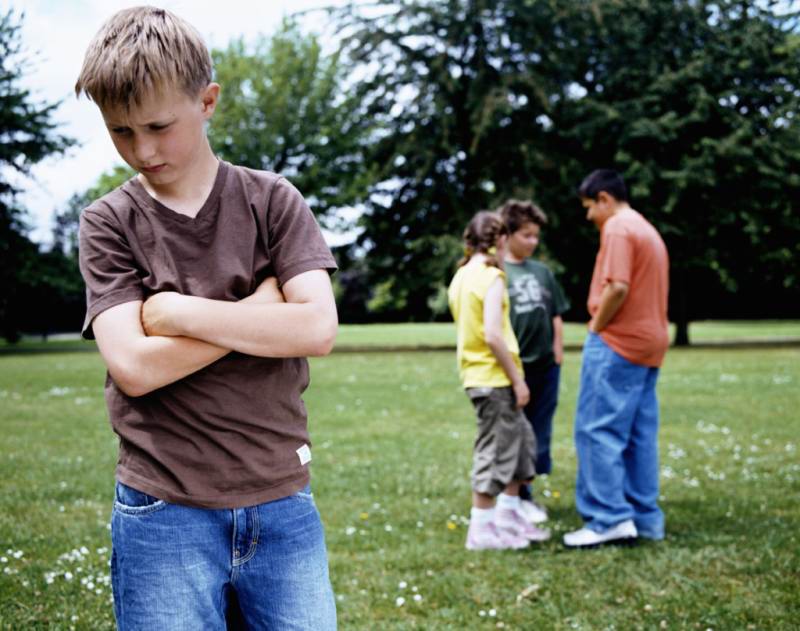5 Tips to Ensure Your Kids Are Protected in School from Bullies
Many children are too ashamed or embarrassed to admit when they’re being bullied. He or she may feel alone and helpless to stop the teasing or attacks. That’s why it’s crucial for a parent to take steps to react to any bullying situation promptly and to teach your child how to take care of themselves.
Teach your child to come to you with any problems
From early on, foster an open relationship with your child. You want them to feel comfortable with coming and telling you the truth, no matter how messy or how scared they might be of the consequences. So, don’t punish them for telling the truth.
Sometimes, due to differences in the way schools are run, a principal or teacher won’t do anything about your child being bullied, even when faced with evidence. You still want to show your child that someone is there to support them and back them up—in fact, this potential situation is when it’s most important.
This article can help you identify and manage your child’s bullying situation before it gets out of hand.
5 tips for your kids
Tip 1: Pay attention to any warning signs
Be on the lookout for warning signs that someone is bullying your child. These include he or she is acting differently than usual, not wanting to go to school, losing friends or not making new ones, bringing home damaged items frequently, or misplacing items regularly with no good explanation.
If you do spot any of these warning signs, don’t delay in getting to the bottom of the situation. Don’t make your child feel like they are being confronted, which might cause them to be anxious and embarrassed and not tell you everything that is going on. Instead, start a discussion and try to tease out what is really going on. Share similar stories of your own school days to relate to them. This is especially important with older teenagers, who may be more rebellious and harder to connect to.
Tip 2: Talk to your child’s teacher or bus driver first
The first step when you suspect your child of being a victim of bullying is to get into discreet contact with your child’s teacher, either by email or phone. Or, if the incidents are occurring on the bus, contact the bus garage. These authority figures are in the classroom or on the bus every day and they have direct, firsthand knowledge of what is going on. Even if the bullying is low-key, this way they can start looking and intervene as necessary.
If you’ve contacted the teacher or bus driver and the situation is not improving despite multiple complaints, then you are free to escalate your contact to the administration. Try to bring documentation of the incidents, as explained to you by your son or daughter, as well as of what attempts you’ve made so far to get the teacher or other authority figure involved.
Tip 3: If you identify a specific bully, get in contact with their parents
Often parents of bullies aren’t aware that their child is the aggressor. If your child is being targeted by a specific bully, first alert the school. Request that either the parents be contacted or that you have their number to do it yourself. And don’t hesitate to follow through—it may feel like an awkward situation, but it doesn’t hand to wind up as a confrontation.
Approach contacting them, especially for the first time, as both sets of parents against the issue, not against each other or against either of your children. If the other parents brush off the situation or worse, if you get the feeling that the bully’s aggression stems from their home life, then you will have to follow other avenues.
Tip 4: Teach your child alternatives to fighting back
Many of us growing up were taught to fight back if a bully attacked us, and while it doesn’t hurt to learn some basic defensive moves, it’s best to teach your child how to de-escalate a confrontation. Often, fighting back can lead to a worse scuffle, ending in injuries for your child, or alternatively, the school taking corrective action against your child instead of, or in addition to, the bully. Schools with no-tolerance violence policies are especially prone to this.
Teach your child to stick with their friends in the lunchroom, in the hallways, and on the bus. Aggressors, just like any predators, usually target individuals over a group. Make sure he or she knows to go to an authority figure whenever the bully does something to them. It’s better to let the adults handle these situations, and it has the added bonus creating witnesses to bullying events, in case you need them later.
If needed, you can also enroll your child in martial arts or self-defense classes, just to be safe, but make sure to let them know that physical aggression should be an absolute last resort.
Tip 5: Teach simple tricks to make your child bully resistant
There are a few things that can help make your child less of a potential victim. One is to encourage a positive sense of self at home. Encourage assertiveness from an early age—whenever another child steals something from them or is otherwise aggressive, encourage them to stand up for themselves in a firm, no-nonsense way. This is better than them falling apart or crying, which will only prove to a bully that what they are doing is working. Teach them to build up resilience, for example, if they do poorly on a test or are disappointed at the outcome of a project, to keep trying again instead of dwelling on their failure. These basic guidelines can help them build their self-esteem, making them less of an easy target.
No school is immune from bullies
No matter public or private, or the income level of the students, every school has issues with bullies. The stress of modern living and the fragile economy continues to have a ripple effect on home lives that shows up as increased aggression. By teaching your child to be assertive and to come to you or other adults with problems, you are instilling in them a sense of confidence that not only can stop bullying, but also help them as they grow into adults.